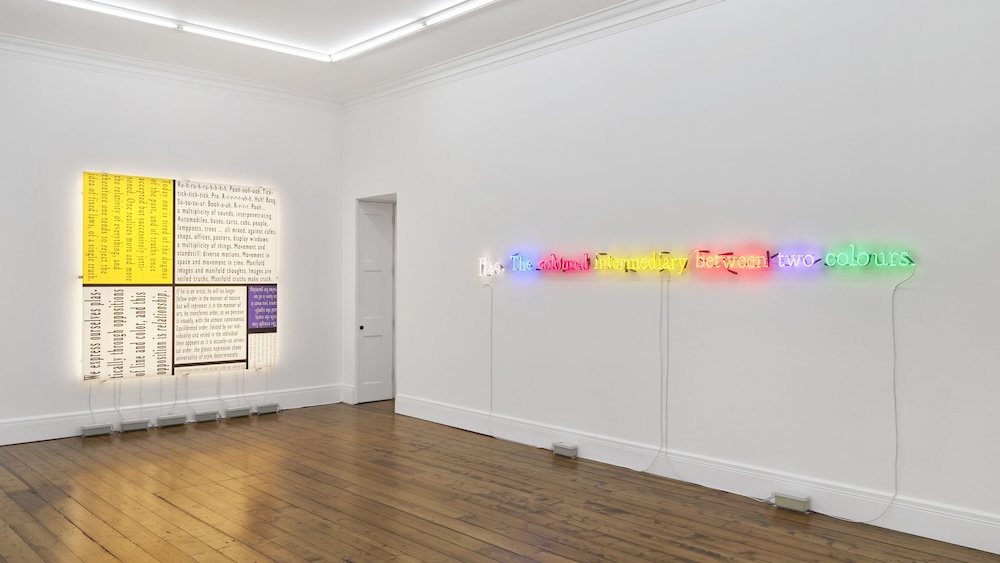Joseph Kosuth: ‘The Question’ | Sprüth Magers
Joseph Kosuth is one of the most severe and strict of conceptual artists. He’s all about the idea. To him, a viewer getting aesthetic pleasure from his works would be besides the point. I hope he doesn’t mind, then, that that’s exactly what I got from his latest London exhibition, a small but career-spanning collection of prints and neons at Sprüth Magers.
The neons especially. I visited on a dark winter evening, just before closing, promising the gallery assistant on the front desk that I wouldn’t be too long. The curators have made the smart choice to use punishingly bright overhead lights, and to remove the blinds from the gallery’s large windows. As a result, the neon glowed brightly through the glass, casting reflections on the Mayfair streets and roofs beyond.

Like other pioneers of the same medium (Dan Flavin et al), Kosuth started using neon in his works in the 1960s due to its humdrum ubiquity. “It was already part of popular culture as signage, and didn’t have ‘high art’ associations,” he says.
“It also was clearly a temporary form of public writing, since neon only functions for a certain time and is then re-pumped or re-made. I was taking a popular form of communication but instead of announcing a product I was using that ‘voice’ to say something else.” True enough at the time; these days though, neon’s a nostalgic medium, as well as a pretty one.
Pretty definitely isn’t what Kosuth is going for. The work pictured above, from 1991, spells out a typically Kosuth-ian semi-nonsense phrase: The coloured intermediary between two colours. We’re meant, I think, to ponder where the colour is here. Somewhere between our subconscious sensation of colour, looking at the colourful neon words. And a rational idea of colour, derived from reading the word. That’s the concept. My instinctive reaction, though was - how pretty! I took a cute photo of the work, with the huge first floor gallery window behind me lit up by the adorably glowy neon letters.
The trailing wires from the works are clipped neatly to the wall, and are connected to plug sockets on the floor. There’s no attempt to hide how this artificial light is produced. Probably this is an intentional choice on the artist’s part - aimed at conveying unshowy honesty. But for me, it just made the scene even cuter.
Maybe I need to stop being so basic, think harder, and work on appreciating - not enjoying - Kosuth’s conceptual art for its concepts. Or maybe Kosuth shouldn’t have made such pretty work.
Joseph Kosuth: ‘The Question’ is at Sprüth Magers (London). 24 January - 15 March 2025